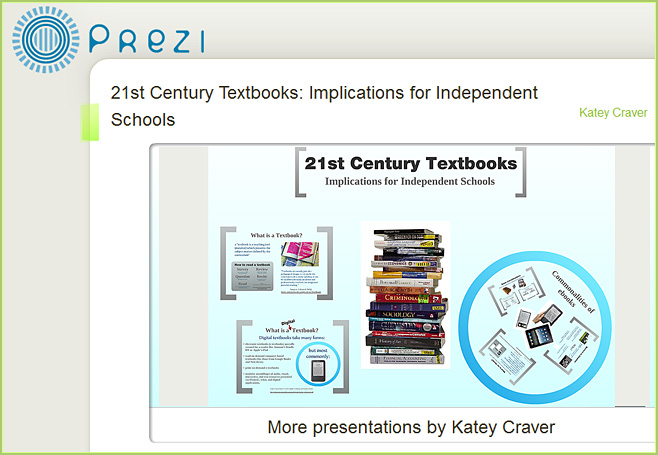EDUCAUSE Review
Volume 46, Number 2 | March/April 2011
Getting a Handle on Mobile: Perspectives
Features
Pearson & McGraw-Hill make multi-million dollar investment in Inkling — from Kirsten Winkler
It seems as if the latest study from Xplana in which they predict that the tipping point for digital textbooks is as near as 2015 has opened up the wallets of two major publishers for an undisclosed “multi million Dollar” investment.
Inkling, the maker of the iPad application and platform which delivers enhanced and engaging textbooks, leaving the “flat, PDF-based digital textbooks” behind is the beneficiary and it could give the startup a competitive edge over the well funded competitor the Kno.
But as money is not everything Inkling, Pearson and McGraw-Hill also made some significant content commitments, boosting the number of titles available on the Inkling platform…
Also see:
Apple iPad 2 ‘sold out’ — from telegraph.co.uk
Analysts at Piper Jaffray and Deutsche Bank claim the Apple iPad 2 is now totally sold out after its Friday launch, with 70% sold to new purchasers
iPad 2 Sold Out, 70% Went to New Buyers — from Mashable.com by Stan Schroeder
Also see:
Tablet devices: iPad takes over as the lecture hall aid of choice — from ft.com by Tim Bradshaw

.
Originally saw this at xplana.com.
Textbook publisher announces ‘app’ approach to learning materials — from The Chronicle by Jeff Young
Long Beach—The phrase “there’s an app for that” may be coming to textbooks.
Today a major textbook company, Cengage Learning, announced a new e-textbook publishing platform that lets professors plug in apps, some made by other software companies, to add to traditional textbook content features like tutoring services or the ability to trade margin notes with other students.
The system is called MindTap, and it is scheduled to be announced at the annual TED conference here. When Chris Vento, Cengage’s executive vice president for technology and development, explained the system to a reporter, he felt the need to put the word “textbook” in air quotes, since traditional textbook content is a small part of the new product. These digital textbooks essentially bundle together several products sold by Cengage and its subsidiaries, including their electronic test-bank system, called Aplia, as well as videos and other materials that the company owns the rights to, including the archives of Newsweek. And MindTap allows professors to customize the presentation of the material, by adding their own slides, video lectures, articles, or free online content from elsewhere.
The 2011 Horizon Report — from the New Media Consortium; via Educause
.
.
Time-to-Adoption: One Year or Less
Time-to-Adoption: Two to Three Years
Time-to-Adoption: Four to Five Years
Also see:
U. of Notre Dame reports on experiment to replace textbooks with iPads — from The Chronicle
Also see: